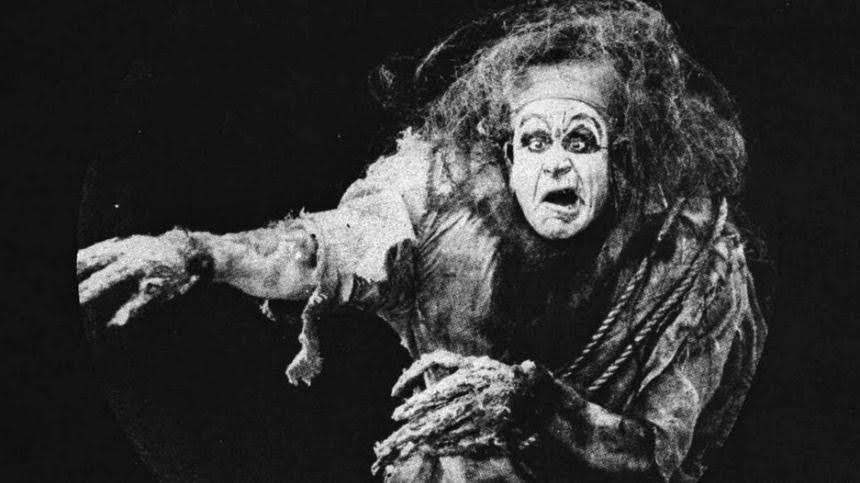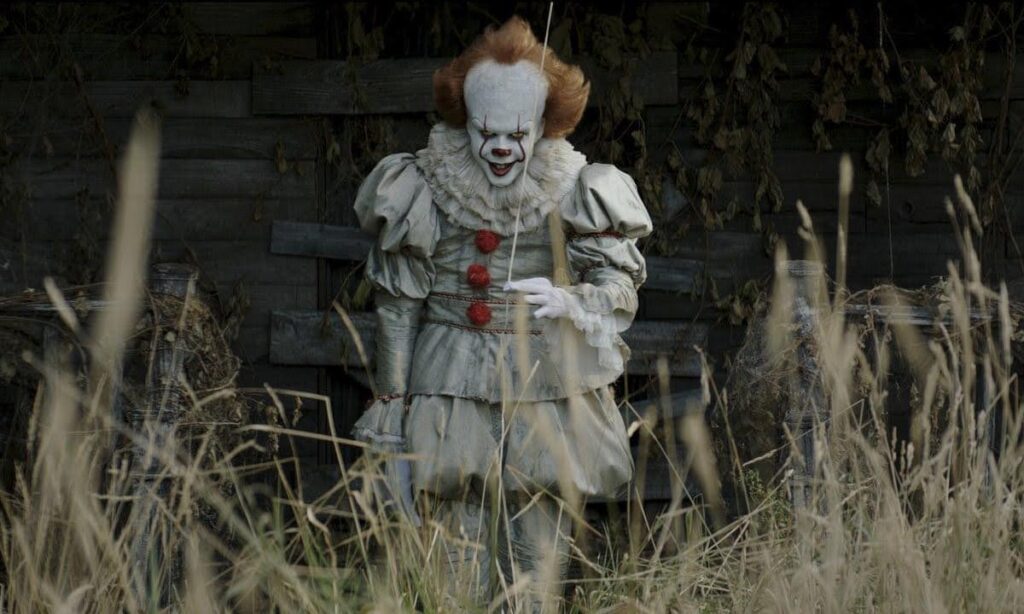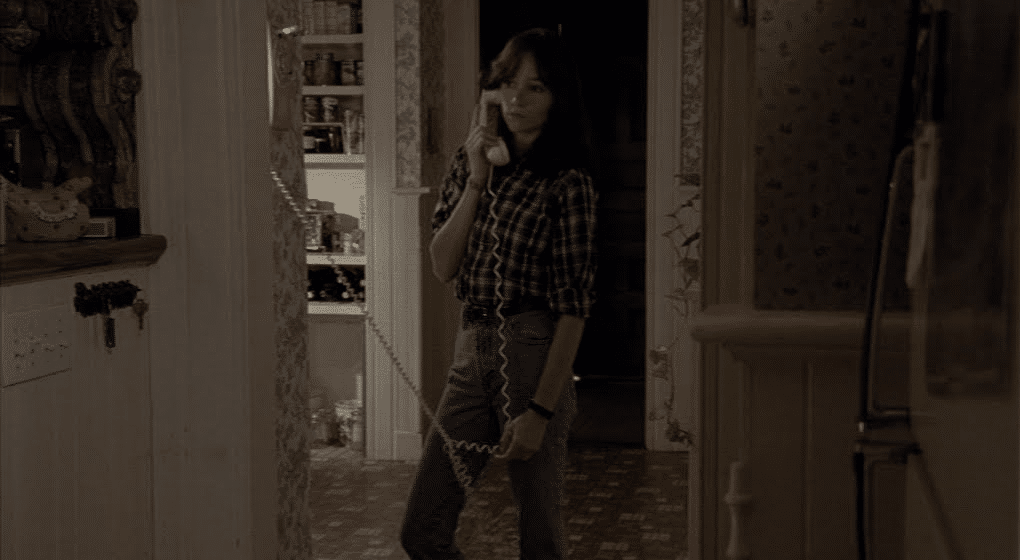
Introduction
Horror gets under our skin and stays with us. From jump scares to gore, monsters to the workings of the human mind, it’s not surprising that we question why we put ourselves through horror movies.
All the above allows us to experience stimulation, something we crave as humans. By exposing ourselves to the horrific or possibility of something terrifying happening, we either trigger feelings of fear and anxiety or excitement and pleasure. Horror movies kickstart the adrenaline through our bodies, giving us a surge in energy.
Horror movies provide a safe place for us to experience this, with us always knowing in the back of our minds that we’re securely in our own homes or in the movie theater. The physical distance between an audience and the horrors occurring on screen allows us to have fun.
The genre also allows filmmakers and viewers to explore the complexities of the human psyche and the dark side to our minds in a safe environment.
Horror has been a huge part of filmmaking history since the mid-1890s. The first ever horror movie is thought to be Le Manoir du Diable (The House of the Devil) (1896) by Georges Méliès. While not overly scary, it was the first film to use elements of the supernatural and the devil. Fast-forward to the 1900s, and more supernatural horrors began to emerge with the first adaptation of Frankenstein (1910) and The Werewolf (1913).
Related: Thriller vs. Horror Films: What’s the Difference?

Since then, horror has had its fair share of hits and flops. But you came here for the best, and here at Celtx, we love to deliver! In today’s article, we’ll explore our top picks for our favorite classic or hidden gem horror movies that’ll leave you hiding behind the couch for weeks.
Not only that, but we’ll also explore just what makes these movies frightening, and how you can replicate their success in your own writing.
Criteria for scariness
As with all genres of film, horror is subjective, with the definition of a ‘good’ horror movie being different for everyone. This is especially the case with horror, as it relies on our individual fears. Jump scares will scare some audiences, but not others, and the case is the same with gore. For example, if clowns aren’t one of your fears, for example, It (2017) probably won’t scare you as much as someone who absolutely hates them.

Believability also has a lot to do with a horror movie’s success. If what’s happening on screen seems farfetched or characters act in ways that don’t make sense, it can have a huge impact on the reception the movie receives. Films such as The Blair Witch Project (1999) had people believing its events actually happened, due to the found footage being so realistic.
Related: ‘The Blair With Project’ Was A Moment That Can’t Be Replicated || WJBR
More so than any other genre, horror relies on all aspects of the filmmaking craft to build atmosphere and tone. An editor ensures the rhythm and pacing correctly builds the tension, a composer creates a chilling soundtrack, a set designer ensures the surroundings and ambiance reflect the action.
This is what makes horror movies so hard to pull off – often many movies will fall by the wayside on one of these elements. The sheer volume of movies being made now also makes it extremely difficult for the lesser-known horrors to shine.
Horror feeds on fear, evening finding fears we didn’t even know we had. Let’s see how our top picks for the most underrated horror movies do just that…
The List
Here it is – ten horror movies that we think are worth a watch! For each film we’ll discover what makes it scary and the elements that contribute to its fear factor as well as sharing a top writing tip that you can use in your own writing.
You may agree or disagree with our picks, and we want to know about it. Drop us your thoughts on our social media channels and spill the beans!
The Ritual (2017)
Set in Scandinavia, The Ritual follows a group on a hike in memorial of one of their friends. This supernatural folk thriller is a great example of the use of setting to bolster the scares. The wilderness of the forest and use of elongated silent moment only added to the growing dread and build up to the gore and devilish entity, Moder.
Viewers praised the writing with believable characters, with Luke, the main character’s, arc being extremely satisfying. The Ritual just goes to show that characters can develop and change in a horror movie, the events they’ve experienced changing them forever.
Writing tip: The Ritual is a masterclass in using setting to enhance fear, the environment actively contributing to the horror. Consider your setting as a character, and see where it takes you.

The Others (2001)
Our favorite “what a twist!” movie has to be The Others. We won’t spoil it here, but it forces you to re-evaluate everything in the movie. The build up to the ghostly twist is driven not by jump scares, but by carefully thought-out pacing and tension. The creaky mansion is an environment of suppression, pushing Nicole Kidman’s character into tight corners and to face the truth of the hauntings.
Writing tip: The Others holds back information from the characters and audience, and slowly revealing details throughout. By adopting this in your own scripts, you can gradually build tension.

Writing your own horror script without the right software is a TERRIFYING thought.
Get started with Celtx today!
The Mist (2007)
Contrary to our previous pick, while the ending of The Mist is gut-wrenching and made us want to put our foot through the theater screen, the rest of the movie is a huge success. A monster horror, the movie’s fear stems from a hidden creature obscured by fog.
The fog itself adds to the suffocating sense of dread that stretches throughout the movie, aided by a growing paranoia and violence among the characters.
Writing tip: Consider the interaction between your characters separate from the main horrors. While the creature was hiding behind the fog, the psychological tension between the characters in The Mist deepens the audience’s fear and shows how true horror can come from within.

Did you Know? The Mist Movie’s Original Ending Was Even Nastier || ScreenRant
Just Before Dawn (1981)
Despite slasher movies becoming stale by the 1980s, Just Before Dawn isn’t all gore and violence. Another horror set in a forest, the setting builds up tension to the killing, casting the characters into a state of isolation and vulnerability.
While the premise of a group of college friends encountering a murderer in the woods has been done many times, when filmmakers find new ways to adapt and bring something new, remarkable things can happen.
Writing tip: Suspense over shock. Your jump scare or gruesome murder will have even more impact if it has been earned. Senseless killing and blood from start to finish becomes dull and takes away the believability of the movie that we know is so important.

The Cabin in the Woods (2011)
The Cabin in the Woods could so easily have been a cliché in itself. A meta-horror that deconstructs the horror genre down to the last trope (the jock, the nerd, creepy location, the woods), the movie ended up being a unique and successful concept.
Instead of running with the same tropes, the movie turns them on their heads, everything turning out to be a meticulous experiment by an underground organization. This control and manipulation is at the heart of the fear, the monster scares all part of the grand plan.
Writing tip: Just like The Cabin in the Woods, you can subvert the traditional expectations of a horror movie. How can you take something established and create a fresh experience?

Hard Candy (2005)
A psychological horror, Hard Candy follows the power dynamics between a predator and a seemingly innocent young girl. The psychological warfare between these two characters creates tension and fear. The sharp dialogue exchanges add to the tension, showing just how words can change everything.
Writing tip: Horror in the mind is an effective tool within the horror genre. Consider how your characters use their minds to drive and change the plot, just as much or even more so as physical violence.

The Sacrament (2013)
Loosely based on the Jonestown Massacre of 1978, The Sacrament explores the impact of a cult on the human condition. Early on in the movie, we realize how vulnerable the characters are to the influence of a charismatic leader. It’s this realization and the build up to the mass suicide scene that disturbs and maintains the tension throughout.
Writing tip: The Sacrament is a fantastic example of horror being firmly ground in reality. With the events being very real, it makes the horror of the movie more immediate, and it’s something you could replicate in your own work. Are there any true stories you could take inspiration from?

The House of the Devil (2009)
Music and setting are the key elements in this horror set in the 1980s. Despite being filmed in the late 2000s, it uses grainy film and a minimalistic score in homage to old-school horror, adding to the creepy atmosphere.
Instead of huge jump scares, small but unnerving events are peppered throughout the film, creating an impending sense of doom. This build-up of small moments results in the shocking and terrifying climax of satanic rituals.
Writing tip: If you’re a fan of the jump scare or huge moments, consider building up to them with smaller moments. That way you can end on a high, keeping your audience on their toes from the first frame.

Starry Eyes (2014)
Diving back into psychological horror, Starry Eyes taps into the horror of ambition. The ambition of an actress willing to sacrifice everything for fame. As she falls under the influence of a Hollywood cult, a growing sense of fear ensues. She begins to lose her sense of self and control of her body as she physically degrades.
Writing tip: Horror is a great genre in which to explore inner conflicts and how they physically manifest themselves. Consider how you could explore this with your own characters. As one thing grows, another shrinks, creating the horror.

Love Ti West’s suspense-building skills as much as Team Celtx? Why not sharpen your own? Celtx has everything you need to craft horror that lingers long after the credits roll. If you’re ready to write your next masterpiece,
start here!
Taste of Fear (1961)
A classic British Hammer horror, Taste of Fear returns us to the creepy mansion. Cinematography plays a large part in garnering fear throughout, playing with shadow and lighting to create the unnerving atmosphere among psychological manipulation.
Sound, or more like the lack of sound, maintains an eeriness, thumps and crashes, providing the shock factor at regular intervals.
Writing tip: Silence could be extremely effective in your horror movie. Use quiet moments for suspense, using sudden sounds to create anxiety. A mere sound could be just as, if not more frightening than a jump scare.

Conclusion
Are you sufficiently terrified now? The horror films we’ve highlighted each offer a unique take on fear, whether through atmosphere, psychological tension, or shocking twists.
From cult classics like Taste of Fear to modern terrors like Starry Eyes, these underrated gems remind us that great horror thrives on creative storytelling, smart pacing, and compelling characters.
We hope this list inspires you to revisit or discover these films and analyze what makes them truly spine-chilling. What are your favorite underrated horror movies?
Let us know over on our socials and share which recent releases you think might become future classics, and make our top 10 list in the future.
If you’re feeling inspired by these hidden horror gems-
bring your own spooky vision to the screen with Celtx—the perfect tool for pacing, character building, and plot twists that will haunt audiences. Start now!
… if you dare
Love a good thrill? Try these blogs next!
- From Dreams to Screams: How to Write a Horror Script
- What is Genre? Understanding Its Role in Storytelling
- The Evolution of Horror
